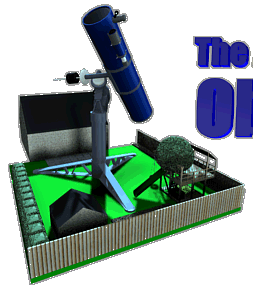 |
 |
|
Moon Phase Project |
Go back to HOMEPAGE
 |
 |
|
Moon Phase Project |
Go back to HOMEPAGE
|
Introduction The Moon is our nearest neighbour, making it the easiest target for amateur observation. However many astronomers dismiss the Moon, preferring to pay attention to more difficult targets like planets, or fainter targets like nebulae and galaxies. Serious deep-sky observers even chide the Moon when it is up because it "pollutes" their dark skies. I live in the middle of a fairly large city, so line-of-sight and light pollution limit what I am able to observe from my backyard. One target that I can observe easily is the Moon, and I do so regularly. I find the Moon an extremely interesting object, with levels of detail that can go beyond my setup's ability to resolve. The Moon is also very dynamic, with its terminator constantly moving and thus highlighting a different selection of surface features each night, or even each hour. The Moon has its own set of observing challenges, whether it be getting just the right seeing conditions to squeeze that next level of detail out of the view, or finding viewing locations and times that allow you to see the moon through all the phases of the lunar cycle. It is ancient, a piece of our prehistoric past that has remained essentially unchanged for 100's of millions, even billions of years. To me this makes the Moon fascinating.
|
||||||||||||||||||||||||||||
|
Objective The objective of this project is to personally observe the Moon on all 29 (29.53 to be precise) days of its cycle. Documentation of each observation will be made using digital images from a Toshiba IK-WB11A netcam, which I have modified to be prime focus mountable to my telescope. I will use my Maxvision ED80 for overall wide view images, and my Meade 8" LX10 for closeup shots of particular features. Depending on which telescope I have out, I use either my Orion Atlas EQ-G mount (LX10 or LX10 + ED80) or the jerry-rigged fork mount from my LX10 (ED80 alone). I also experiment with filters a bit, trying both colour filters as well as a Single Line Polarizing filter (half of a variable polarizing filter) which I refer to as a SLP. I have done a minimal amount of image processing, only enough to assembly mosaics from raw camera frames, and to tweak the tone balance. I have not used any stacking of multiple frames for the images presented here. In some cases I have had to do a little manual editing in order to have a nice black background, a result of noisy or low contrast (daylight) images.
|
||||||||||||||||||||||||||||
|
The Lunar Cycle The lunar calendar is actually rather complicated. It takes the Moon 29.53 mean solar days to go from new moon to new moon. The day and time a particular phase occurs on varies due to the complex interaction between the orbits and rotational speeds of the Moon and Earth. This means that if you try to view the Moon each month when it is exactly the same phase, it will not be at the same time, or even necessarily the same day. The Moon also won't necessarily be in the same location in the sky for the same phase. The path traced out in the sky by the Moon at the same time each day of its cycle is called an analemma. The image below is a composite showing the lunar analemma, as photographed by Rich Richins in July 2005. To simplify things I have divided the lunar calendar into four mean lunar weeks, each 7 (mean solar) days long. In reality a lunar week varies between 6 and 8 mean solar days. The first day of each lunar week is marked by a principal phase: new moon, first quarter, full moon, and last quarter. I have fit all of my observations into the resulting 28 day calendar. My estimates of Moon rise/meridian/set, and terminator location are based on this simplifying assumption and so are not strictly correct but serve to give the observer a general feel for when and where the moon was during my observations.
|
||||||||||||||||||||||||||||
|
observations to date: 32 (as of April 2011) My observations are organised by day, based on a 7 day long mean lunar week, as I discuss above. Day 28 is not shown as it is the same as Day 0. The days in the table below that have an active link indicate that I have made an observation on that day, all days with no link are yet to be observed.
|
||||||||||||||||||||||||||||
|
Go back to HOMEPAGE |
Last updated: 08-Nov-11
|
Copyrights to all content from the webpages hosted here belongs to Jim Thompson. Nov. 2009. |